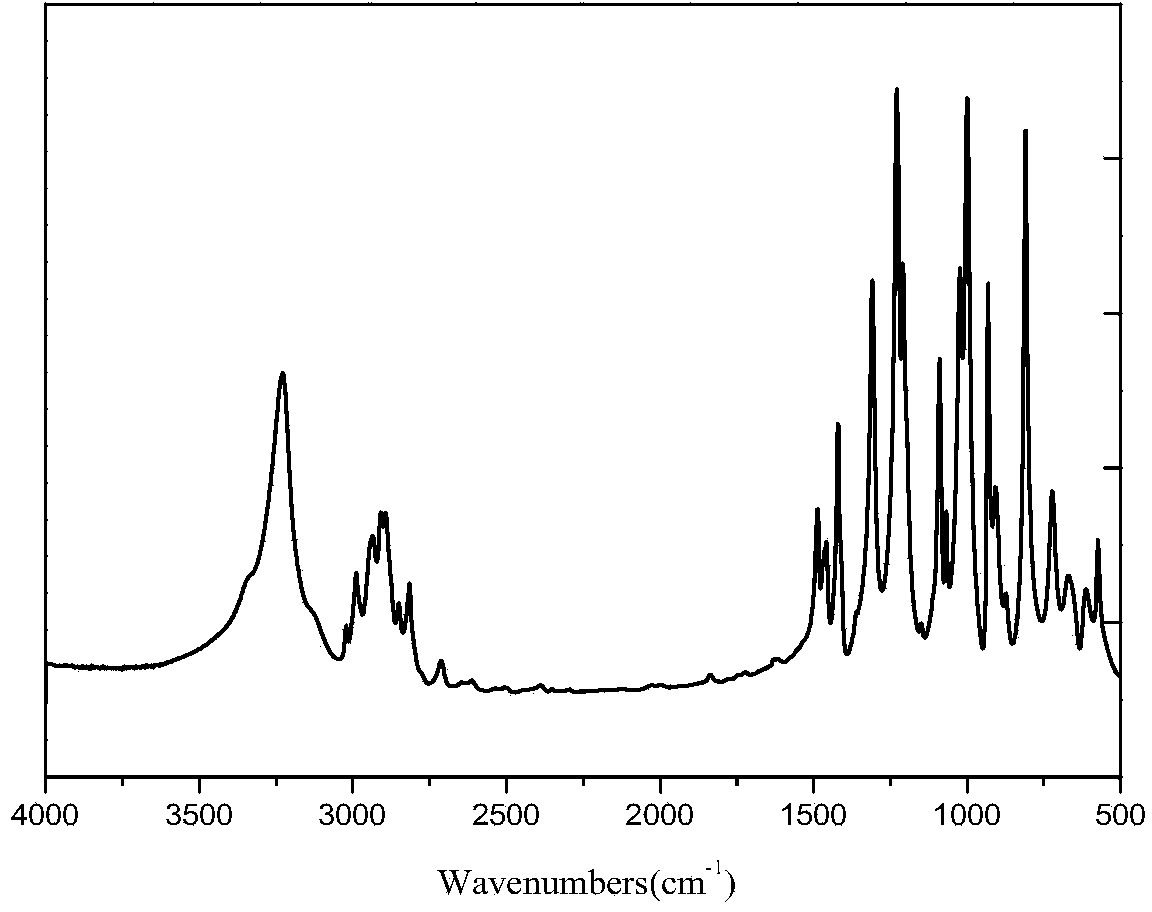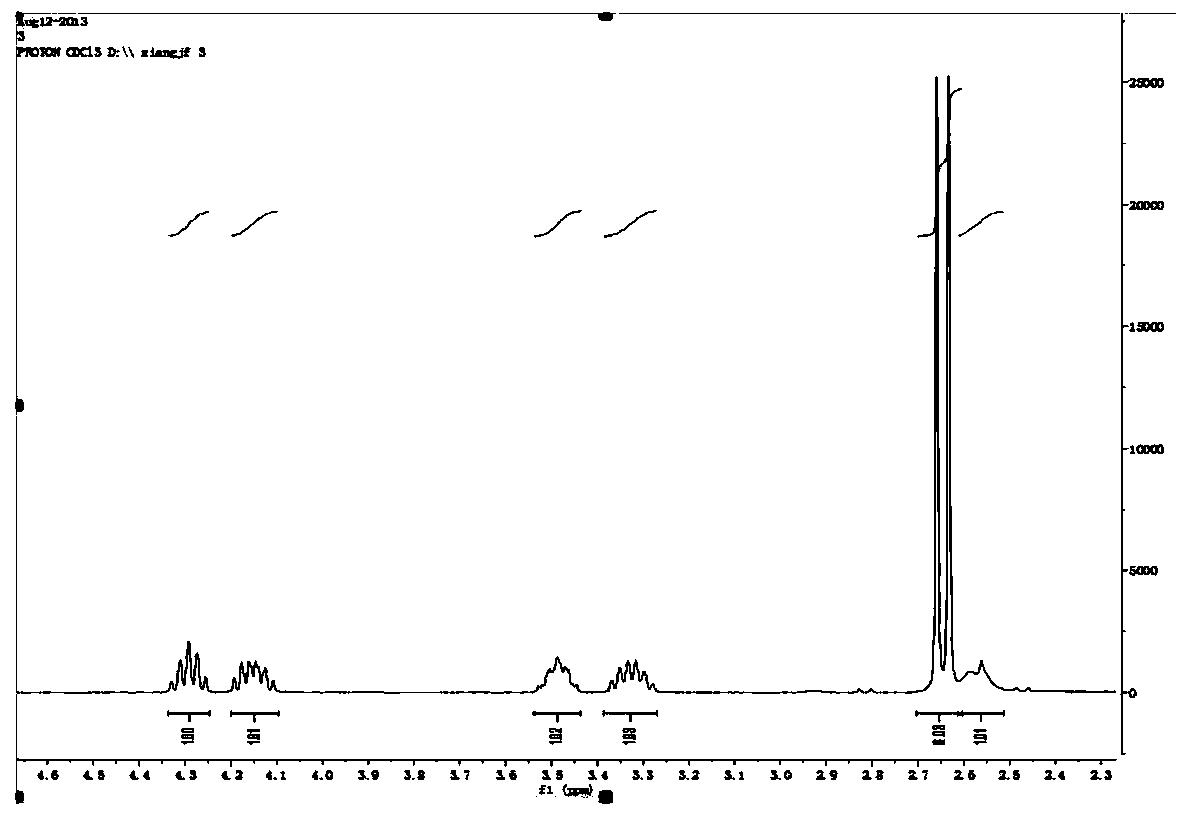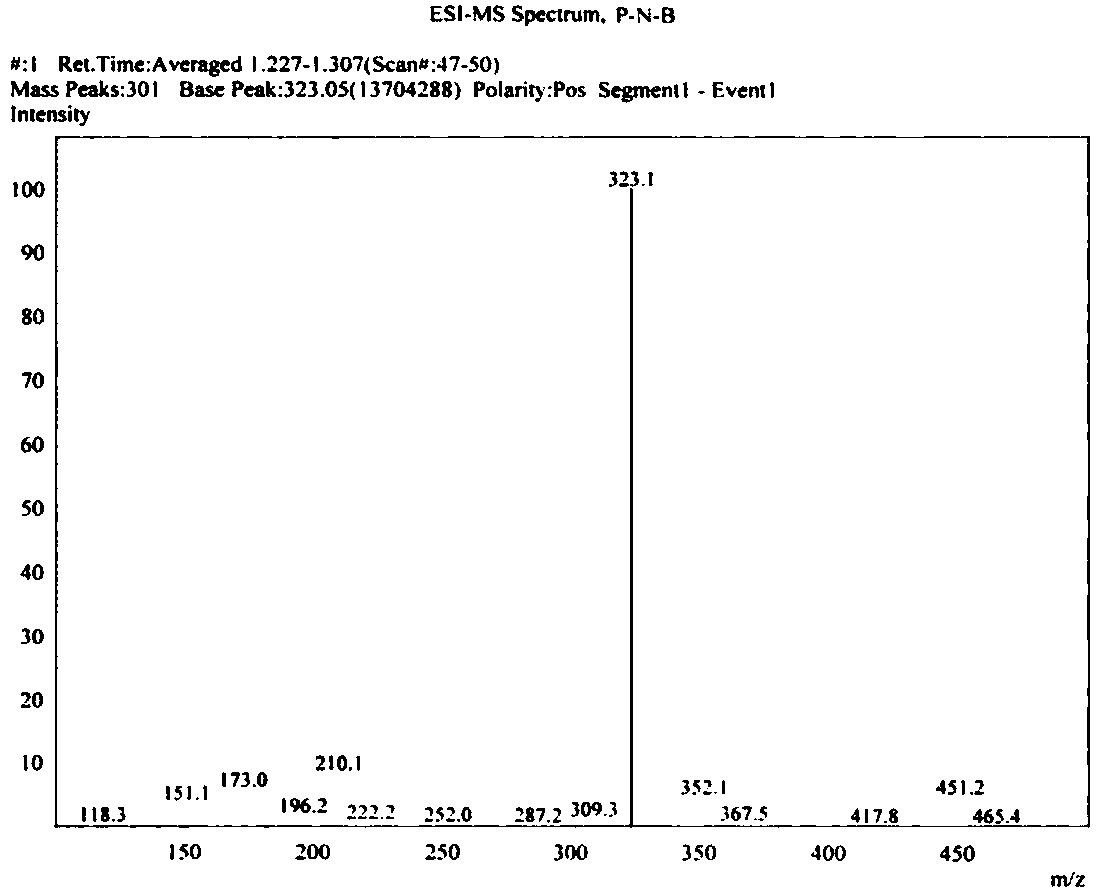Cyclic phosphorus-nitrogen synergistic halogen-free flame retardant
A flame retardant, phosphorus-nitrogen technology, applied in 2 fields, can solve the problems of multiple smog and toxic corrosive gas, secondary pollution, affecting immunity and regeneration system, etc., and achieves broad market application prospects, stable structure, good flame retardant effect of effect
- Summary
- Abstract
- Description
- Claims
- Application Information
AI Technical Summary
Problems solved by technology
Method used
Image
Examples
Embodiment 1
[0029] A cyclic phosphorus nitrogen synergistic halogen-free flame retardant, named: 2,7-bis(N,N-dimethylamino)-1,6,3,8,2,7-octahydrodioxadioxan azole diphosphonic acid; the structure of this compound is shown below:
[0030]
[0031] 2,7-bis(N,N-dimethylamino)-1,6,3,8,2,7-octahydrodioxadiazole diphosphonic acid is a white or light yellow solid, and the product yield is 35 %~50%, the melting point is 88,7°C, the temperature at the maximum decomposition rate of thermogravimetric loss is 198.14°C, and the percentages of P, N, H, and C in the molecular structure are 20.66%, 18.66%, 7.33% and 32% respectively , suitable for flame retardant or chain extender of polymer materials. like figure 1 , figure 2 , image 3 shown; figure 1 Indicates that 3264cm -1 At the N-H stretching vibration absorption peak; 2930~2894cm -1 at -CH 2- CH 2 Stretching vibration absorption peak; 1394cm -1 It is the stretching vibration absorption peak of -P-NH; 1213.99cm -1 , 1310.41cm -1 , ...
Embodiment 2
[0034] A cyclic phosphorus nitrogen synergistic halogen-free flame retardant, named: 2,7-bis(N,N-dimethylamino)-1,6,3,8,2,7-octahydrodioxadioxan azole diphosphonic acid; the structure of this compound is shown below:
[0035]
[0036]2,7-bis(N,N-dimethylamino)-1,6,3,8,2,7-octahydrodioxadiazole diphosphonic acid is a white or light yellow solid, and the product yield is 35 %~50%, the melting point is 88,7°C, the temperature at the maximum decomposition rate of thermogravimetric loss is 198.14°C, and the percentages of P, N, H, and C in the molecular structure are 20.66%, 18.66%, 7.33% and 32% respectively It is suitable for flame retardant or chain extender of polymer materials.
[0037] In a reactor equipped with an argon protection device, a thermometer, and a feeder, add 0.15 mol of phosphorus oxychloride and 0.1 mol of dimethylamine hydrochloride, and at the same time add 150 ml of toluene as a solvent, and put 0.25 mol of triethylamine in the feeder , under magnetic s...
Embodiment 3
[0039] A cyclic phosphorus nitrogen synergistic halogen-free flame retardant, named: 2,7-bis(N,N-dimethylamino)-1,6,3,8,2,7-octahydrodioxadioxan azole diphosphonic acid; the structure of this compound is shown below:
[0040]
[0041] 2,7-bis(N,N-dimethylamino)-1,6,3,8,2,7-octahydrodioxadiazole diphosphonic acid is a white or light yellow solid, and the product yield is 35 %~50%, the melting point is 88,7°C, the temperature at the maximum decomposition rate of thermogravimetric loss is 198.14°C, and the percentages of P, N, H, and C in the molecular structure are 20.66%, 18.66%, 7.33% and 32% respectively It is suitable for flame retardant or chain extender of polymer materials.
[0042] with N 2 In the reactor of protective device, thermometer, feeder, add 0.6mol phosphorus oxychloride and 0.4mol dimethylamine hydrochloride, add 300ml ethyl acetate simultaneously as solvent, put 0.9mol triethylamine in feeder, in Under magnetic stirring, slowly drop triethylamine into t...
PUM
 Login to View More
Login to View More Abstract
Description
Claims
Application Information
 Login to View More
Login to View More - R&D Engineer
- R&D Manager
- IP Professional
- Industry Leading Data Capabilities
- Powerful AI technology
- Patent DNA Extraction
Browse by: Latest US Patents, China's latest patents, Technical Efficacy Thesaurus, Application Domain, Technology Topic, Popular Technical Reports.
© 2024 PatSnap. All rights reserved.Legal|Privacy policy|Modern Slavery Act Transparency Statement|Sitemap|About US| Contact US: help@patsnap.com










